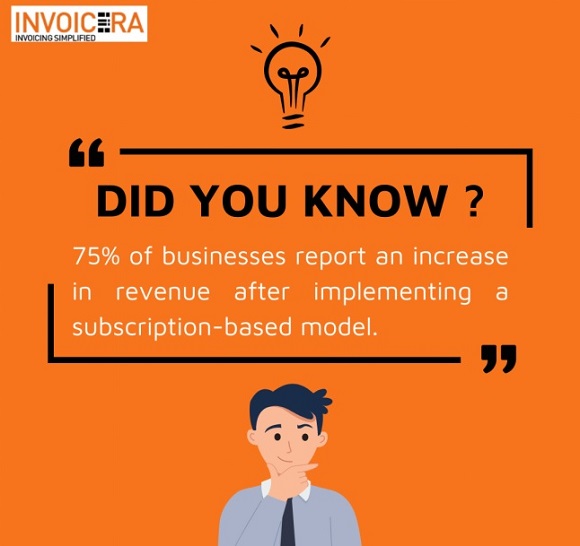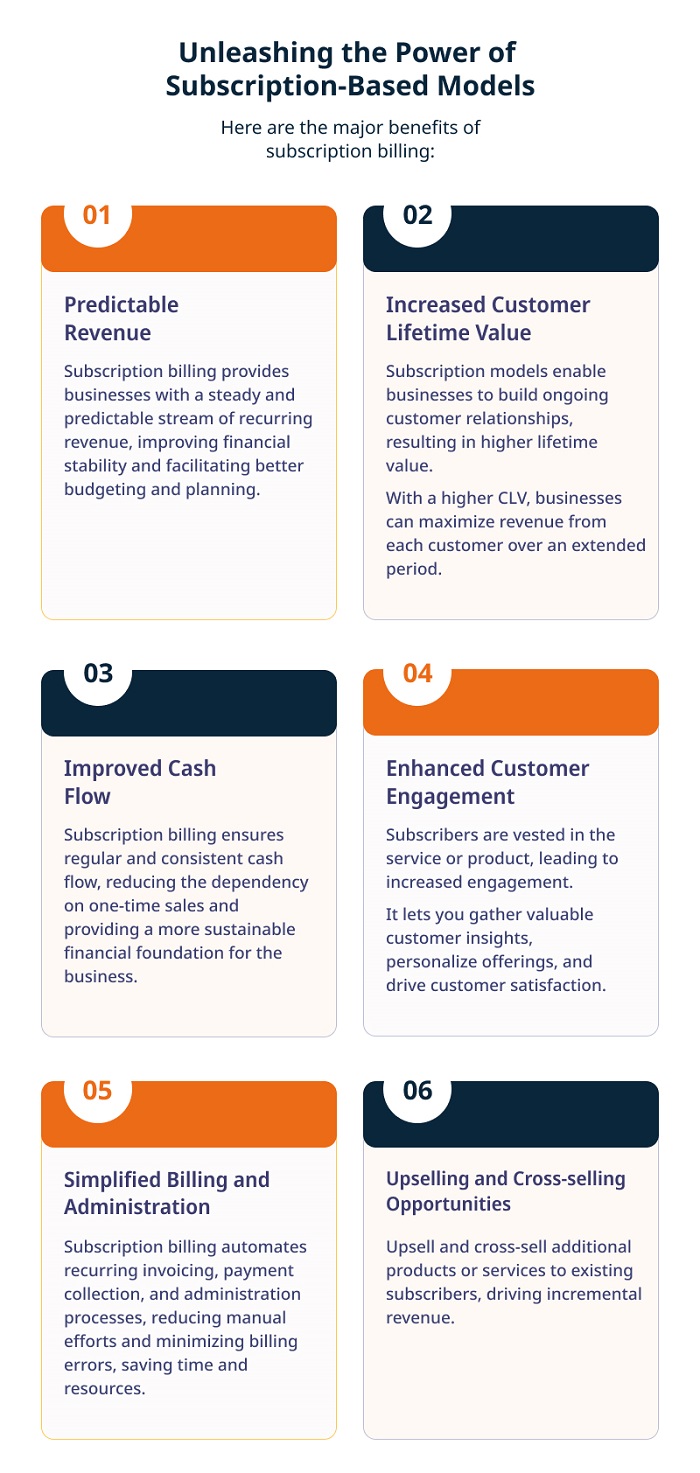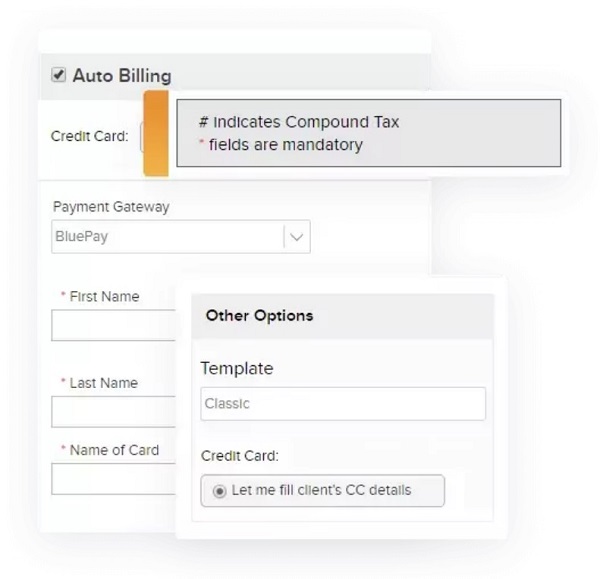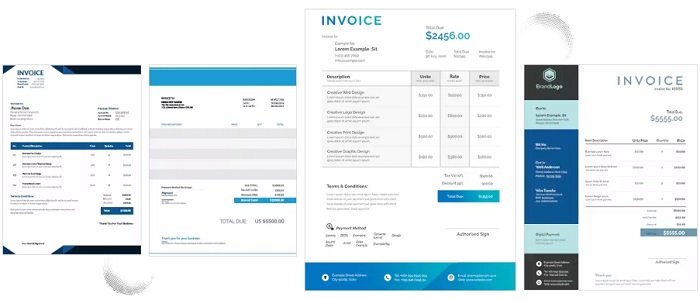Subscription-based models have gained immense popularity, revolutionizing how companies generate revenue.
Without a reliable subscription model, you might have to face the challenges such as:
- Unpredictable cash flow
- Inconsistent revenue streams
- Reduced customer lifetime value
- Difficulty in forecasting future sales and revenue projections
This blog will provide a deep understanding of subscription billing, its key components, various models, and best practices to successfully implement and optimize this model.
Whether you’re a SaaS provider, an e-commerce company, or any organization exploring recurring revenue streams, this guide will equip you with valuable insights to confidently navigate the world of subscription billing.
Understanding The Key Components of Subscription Billing
The various key components of subscription billing include:
-
Pricing and Plans
Offering a variety of pricing options and subscription plans to cater to different customer needs and preferences.
-
Billing Cycle
Establishing the frequency at which customers are billed, whether monthly, quarterly, annually, or any other defined period.
-
Billing Automation
Utilizing automated systems to generate and send invoices, process payments, and handle billing-related tasks.
-
Subscription Management
Managing customer subscriptions throughout their lifecycle, including sign-ups, upgrades, downgrades, and cancellations.
-
Revenue Recognition
Ensuring accurate and compliant recognition of revenue based on subscription terms, accounting standards, and regulations.
-
Payment Gateways
Integrating secure payment gateways facilitates smooth and secure transactions between customers and the business.
-
Customer Notifications
Sending timely notifications to customers regarding upcoming payments, changes in subscription terms, or renewal reminders.
-
Analytics and Reporting
Tracking and analyzing subscription-related data, including churn rates, customer retention, revenue growth, and other key metrics.
-
Customer Support
Providing dedicated support channels for subscribers to address their inquiries, concerns, or subscription-related issues.
-
Scalability
Designing the subscription billing system to accommodate business growth, handle increasing volumes of subscribers, and adapt to changing needs over time.
Benefits of Subscription Billing for Businesses
Read the below infographics to know the benefits of subscription billing for your organization.
Common Subscription Billing Models
Now, we will explore some best practices to ensure a smooth and efficient implementation of subscription billing.
Here are some common subscription billing models:
-
Fixed Price Model
Customers pay a predetermined fixed price on a recurring basis, typically monthly or annually, to access a specific set of products or services.
-
Tiered Pricing Model
This model offers different subscription tiers with varying features, benefits, and pricing levels. Customers can choose the tier that best suits their needs and budget.
-
Usage-Based Model
Billing is based on the actual usage or consumption of the product or service.
Customers pay for the amount they use, such as per unit, per hour, or per usage tier.
-
Freemium Model
The basic version of the product or service is offered for free, allowing customers to get a taste of the offering.
Premium features or advanced functionality are available at a cost, enticing customers to upgrade to a paid subscription.
-
Perpetual License Model
Customers purchase a one-time license for the product or service, which grants them perpetual access to the offering.
It may include maintenance and support fees for ongoing updates and assistance.
-
Bundle or Package Model
Multiple products or services are bundled together and offered as a single subscription package.
It provides customers with a comprehensive solution while offering cost savings compared to purchasing individual items separately.
-
Hybrid Model
Different billing models are used, allowing companies to cater to various customer segments and preferences.
For example, a subscription may include a fixed price for a base product with additional charges for usage-based features.
Subscription Billing With Invoicera
Invoicera offers robust features and capabilities for organizations to implement and manage subscription billing effectively.
With Invoicera’s subscription billing module, companies can easily:
- Streamline recurring billing processes
- Improve cash flow
- Enhance customer relationships
Furthermore, this platform enables companies to:
- Set up various subscription models
- Automate invoicing and payment collection
- Track subscription renewals
- Generate comprehensive reports for better insights
Invoicera’s subscription billing solution empowers businesses to optimize their subscription-based revenue streams and drive long-term success.
Here are some powerful features of Invoicera to help you with subscription billing.
-
Flexible Subscription Management
Invoicera allows you to easily create and manage different subscription plans, customize pricing tiers, set billing cycles, and handle upgrades or downgrades seamlessly.
What to look for:
- Customizable plans
- Upgrades and Downgrades
- Proactive plan adjustments
-
Automated Invoicing
Invoicera automates the invoicing process for your subscriptions, generating recurring invoices and sending them to customers at predefined intervals, saving you time and effort.
What to look for:
- Error reduction
- Consistent branding
- Invoice templates
-
Seamless Payment Collection
With Invoicera, you can integrate multiple payment gateways to collect payments from your subscribers effortlessly.
What to look for:
- 14 payment gateways
- Secure Transactions
- Automatic Payment Processing
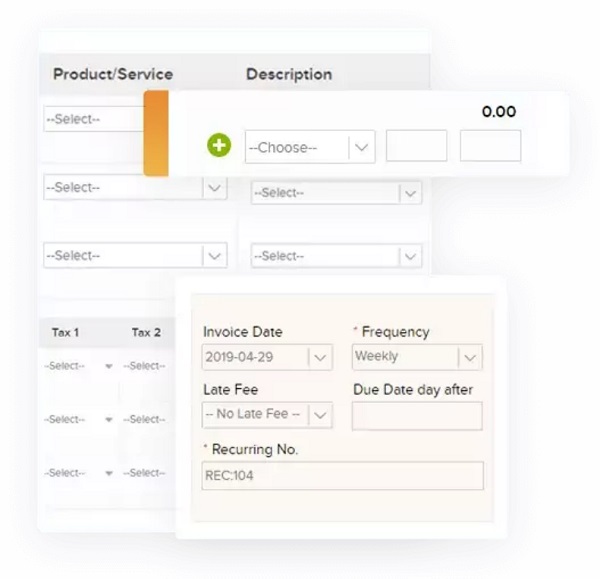
-
Subscription Renewal Reminders
Invoicera sends automated reminders to subscribers before their subscription renewal dates.
What to look for:
- Timely notifications
- Customizable reminders
- Churn prevention
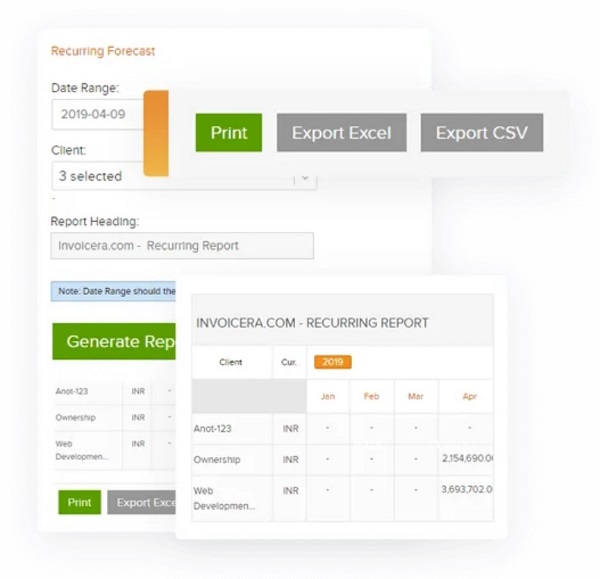
-
Mobile Apps
Invoicera offers mobile apps for both iOS and Android devices, enabling travel agencies to manage invoicing tasks on the go.
What to look for:
- Stay connected with clients
- Create and send invoices
- Better productivity and responsiveness
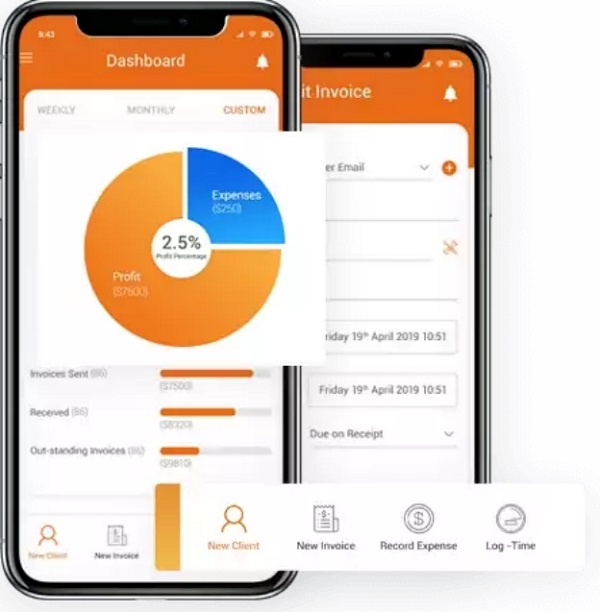
Best Practices for Implementing Subscription Billing
In this section, we will explore key best practices you can follow to ensure a smooth and efficient implementation of subscription billing.
-
Clearly Define Subscription Plans
Ensure to clearly define your subscription plans, including features, pricing, and billing cycles.
The plans should align with customer needs and offer value for the price.
-
Transparent Pricing and Terms
Provide transparent pricing information and clearly communicate any additional fees, renewal terms, and cancellation policies to customers.
Transparency builds trust and reduces customer dissatisfaction.
-
Offer Trial Periods or Freemium Options
Consider offering trial periods or freemium options to allow customers to experience your subscription service before committing to a paid plan.
It helps build trust and increases conversion rates.
-
Robust Payment Gateway Integration
Integrate reliable and secure payment gateways to ensure smooth and hassle-free payment processing.
Offer multiple payment options to cater to different customer preferences.
-
Monitor Churn Rates and Customer Feedback
Regularly monitor churn rates and gather customer feedback to identify areas for improvement.
Address customer concerns promptly and proactively to reduce churn and increase customer satisfaction.
-
Proactive Subscription Renewal Management
Implement automated subscription renewal reminders to ensure timely payments and minimize involuntary churn.
Notify customers well in advance about upcoming renewals and provide easy options for renewal.
Closing Thoughts
We have delved into the intricacies of subscription billing, exploring its key components, benefits, common models, and best practices.
By understanding the subscription billing model and implementing the recommended best practices, organizations can unlock new opportunities for recurring revenue, improve customer relationships, and achieve long-term success.
Embracing subscription billing as a strategic approach can help organizations adapt to evolving customer preferences, enhance operational efficiency, and drive sustainable growth in today’s subscription economy.
See how Invoicera can optimize your subscription billing management.
Request a Demo!
FAQs
Ques. What is subscription billing?
Ans. Subscription billing is a business model where customers pay a recurring fee regularly for access to a product or service.
Ques. How does subscription billing differ from traditional one-time payments?
Ans. Unlike one-time payments, subscription billing allows businesses to establish ongoing customer relationships and generate recurring revenue over an extended period.
Ques. Which is the best subscription billing app?
Ans. Invoicera is regarded as one of the best subscription billing apps.
It offers a comprehensive suite of features, including:
- Automated invoicing
- Flexible subscription management
- Seamless payment collection
It empowers companies to manage their subscription-based services and enhance their revenue streams efficiently.


